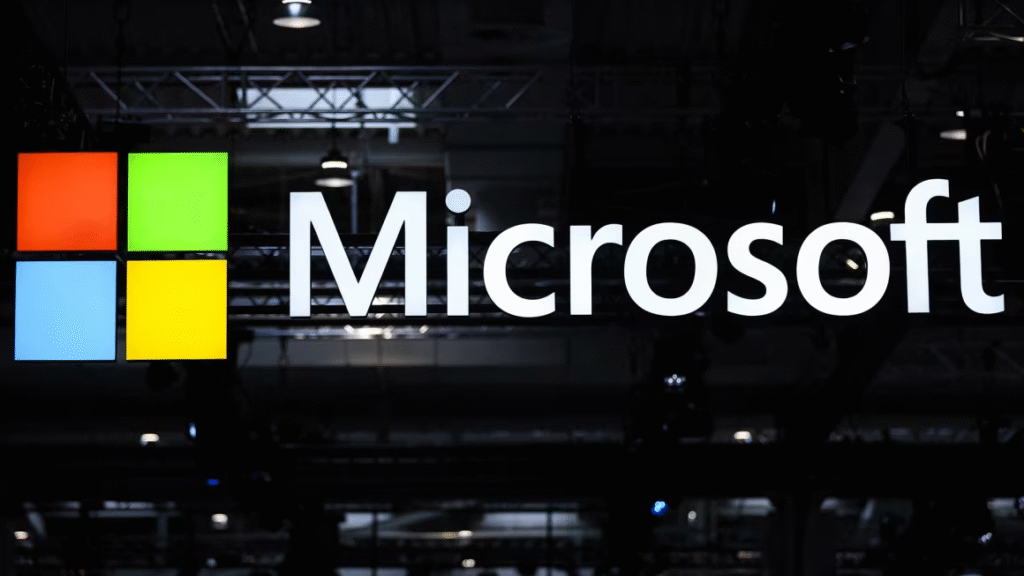Microsoft warns of active attacks on SharePoint servers targeting agencies and businesses. Learn about the risks, zero-day flaws, and urgent security updates.
Table of Contents
🚨 Microsoft Alerts Businesses and Governments to Attacks on SharePoint Servers
In a critical cybersecurity update, Microsoft has warned of active attacks targeting SharePoint servers, widely used by government agencies and businesses worldwide to collaborate and share documents. The tech giant has urged organizations to install security updates immediately to mitigate the risk of exploitation.
This article breaks down:
✅ What’s happening with SharePoint server attacks
✅ Who is at risk and why this matters
✅ Microsoft’s recommendations to protect systems
✅ What businesses and governments should do next
📰 What Happened?
On Saturday, Microsoft (MSFT) issued an alert revealing that attackers are actively exploiting vulnerabilities in SharePoint servers.
The Federal Bureau of Investigation (FBI) confirmed on Sunday that it is aware of the attacks and is working closely with federal agencies and private sector partners to investigate and respond.
“We’ve been coordinating closely with CISA, DOD Cyber Defense Command, and key cybersecurity partners globally throughout our response,” said a Microsoft spokesperson.
The attacks, first reported by The Washington Post, involve a “zero-day” vulnerability — a previously unknown flaw in the software that hackers are exploiting before a fix is available.
Tens of thousands of servers are believed to be at risk, including those belonging to U.S. and international agencies and businesses.
🔥 Why This Attack Is Critical
🕵️♂️ What is a Zero-Day Attack?
A zero-day attack occurs when cybercriminals exploit a vulnerability that software makers didn’t know existed. This leaves no time for companies to prepare or patch their systems, making these attacks particularly dangerous.
🛡️ What is SharePoint?
Microsoft SharePoint is a web-based platform that allows organizations to:
- Store, organize, and share documents
- Collaborate across teams securely
- Integrate with Office 365 tools
It’s widely deployed in government agencies and large enterprises. A compromise could lead to:
✅ Data theft (including sensitive government information)
✅ Network-wide breaches
✅ Financial fraud through spoofing attacks
⚠️ Who Is Affected?
❌ Affected Systems:
- SharePoint Server 2016
- SharePoint Server 2019
These versions, often hosted on-premises, are vulnerable.
✅ Not Affected:
- SharePoint Online (Microsoft 365)
Since it’s cloud-hosted, Microsoft manages security and has confirmed it is not impacted.
🛡️ Microsoft’s Recommendations
🚨 Immediate Actions
- Install Security Updates:
- Microsoft has released patches for the affected versions.
- Customers are urged to apply these immediately.
- Enable Malware Protection:
- If enabling protection isn’t possible, disconnect the servers from the internet until a fix can be applied.
- Network Monitoring:
- Monitor networks for unusual activity and potential signs of compromise.
📝 Details of the Vulnerability
- Allows an authorized attacker to perform spoofing over a network.
- In a spoofing attack, hackers disguise themselves as trusted entities to:
✅ Steal sensitive data
✅ Manipulate transactions
✅ Gain access to critical systems
🌎 Global Implications of the SharePoint Attacks
🏛️ Governments on High Alert
With agencies relying on SharePoint for sensitive communications, there are fears of:
- State-sponsored cyber espionage
- Unauthorized access to classified data
🏢 Businesses at Risk
Large corporations could see:
- Intellectual property theft
- Disruption of operations
- Regulatory and financial penalties if data is leaked
💡 What Businesses & Governments Should Do Next
🔒 Immediate Steps
✅ Patch all SharePoint servers immediately.
✅ Conduct penetration tests to check for existing breaches.
✅ Review user permissions and revoke access where unnecessary.
✅ Enable multi-factor authentication (MFA) for all accounts.
🧑💻 Long-Term Strategy
✅ Consider migrating to cloud-based SharePoint Online for Microsoft-managed security.
✅ Train staff on phishing and spoofing threats.
✅ Develop an incident response plan to react quickly to breaches.
🛡️ What If You Can’t Patch Immediately?
If your organization is unable to install Microsoft’s patches:
⚠️ Disconnect servers from the internet to minimize exposure.
⚠️ Limit access to trusted internal networks only.
📊 SharePoint Server: Usage Statistics
| Category | Details |
|---|---|
| Global SharePoint Users | Over 200 million |
| Governments Using It | U.S., UK, EU, and Asia-Pacific agencies |
| Business Adoption Rate | 80% of Fortune 500 companies |
| Vulnerable Servers | Tens of thousands (Microsoft estimation) |
🔥 What Makes This Threat So Dangerous?
- Wide Deployment:
SharePoint is used globally across critical industries. - High Privilege Access:
A compromised SharePoint server often provides attackers deep access into networks. - Potential for Ransomware:
SharePoint breaches are a common entry point for ransomware attacks.
❓ FAQs: Microsoft SharePoint Server Attacks
1. What is a zero-day attack?
A zero-day attack exploits a software vulnerability that is unknown to the vendor, giving hackers a head start before patches are released.
2. Are cloud SharePoint users affected?
No. SharePoint Online in Microsoft 365 is managed by Microsoft and is not vulnerable to these attacks.
3. What happens in a spoofing attack?
Hackers disguise themselves as trusted entities (e.g., employees, systems) to manipulate targets and gain unauthorized access.

